Discover 1001 RADIO DAYS
1001 RADIO DAYS

1001 RADIO DAYS
Author: Jon Hagadorn
Subscribed: 257Played: 16,146Subscribe
Share
© 2019 1001 Stories Podcast Network
Description
Radio Days, When Radio Was King- brings you a wide variety of entertainment from the golden age of radio - drama, detective, suspense, comedy, sci-fi, theater- and much more. The selection and quality of the shows is excellent.. Brought to you by 1001 Stories Podcast Network. Hosted by Jon Hagadorn. We appreciate reviews!
679 Episodes
Reverse
Dragnet, the brainchild of Jack Webb, may very well be the most well-remembered, and the best, radio police drama series. From September, 1949 through February 1957, Dragnet's 30 minute shows, broadcast on NBC, brought to radio true police stories in a low-key, documentary style. The origins of Dragnet can be traced to a semi-documentary film, "He Walked by Night" from 1948, in which Webb had a small role. Both employed the same Los Angeles Police Department technical adviser, used actual police cases and presented the case in "just the facts" manner that became a hallmark of Dragnet. It is interesting to note that Webb employed that format in other radio series, some pre-dating the film mentioned above. Dragnet was a long running radio and television police procedural drama, about the cases of a dedicated Los Angeles police detective, Sergeant Joe Friday, and his partners. The show takes its name from an actual police term, a dragnet, meaning a system of coordinated measures for apprehending criminals or suspects. Dragnet was perhaps the most famous and influential police procedural drama in American media history. The series gave millions of Americans a feel for the boredom and drudgery, as well as the danger and heroism, of real life police work. Dragnet earned praise for improving the public opinion of police officers. Actor and producer Jack Webb's aims in Dragnet were for realism and unpretentious acting. He achieved both goals and Dragnet remains a key influence on subsequent police dramas in many media. The shows cultural impact is demonstrated by the fact that even after five decades, elements of Dragnet are known to those who have never heard nor seen the program. The ominous four note introduction to the brass and tympani theme music, titled Danger Ahead, is instantly recognizable as well as the shows opening narration: "Ladies and gentlemen, the story you are about to hear is true. Only the names have been changed to protect the innocent." The original Dragnet starring Jack Webb as Sergeant Joe Friday ran on radio from June 3rd, 1949 to February 26th, 1957; and on television from December 16th, 1951 to August 23rd, 1959, and from January 12th, 1967 to April 16th, 1970. All of these versions ran on NBC. There were two Dragnet feature films, a straight adaptation starring Jack Webb in 1954, and a comedy spoof in 1987. There were also television revivals, without Webb, in 1989 and 2003.
Yours Truly, Johnny Dollar is a radio drama that aired on CBS Radio from February 18, 1949 to September 30, 1962.[1][2] The first several seasons imagined protagonist Johnny Dollar as a private investigator drama, with Charles Russell, Edmond O'Brien and John Lund portraying Dollar in succession over the years. In 1955 after a yearlong hiatus, the series came back in its best-known incarnation with Bob Bailey starring in "the transcribed adventures of the man with the action-packed expense account – America's fabulous freelance insurance investigator." There were 809 episodes (plus two not-for-broadcast auditions) in the 13-year run, and more than 710 still exist today.[3] Jim Cox's book American Radio Networks: A History cites "886 total performances" which includes repeat performances. The format best remembered was instituted by writer-director Jack Johnstone. Each case usually started with a phone call from an insurance adjuster, calling on Johnny to investigate an unusual claim: a suspicious death, an attempted fraud, a missing person, or other mysterious circumstances. Each story required Johnny to travel to some distant locale, usually within the United States but sometimes abroad, where he was almost always threatened with personal danger in the course of his investigations. He would compare notes with the police officials who had first investigated each strange occurrence, and followed every clue until he figured out what actually happened. Johnny's file on each case was usually referenced as a "matter," as in "The Silver Blue Matter" or "The Forbes Matter". Later episodes were more fanciful, with titles like "The Wayward Trout Matter" and "The Price of Fame Matter" (the latter featuring a rare guest-star appearance by Vincent Price as himself; here Price and Dollar team up to retrieve a painting stolen by Price's insurance agent). Johnny usually stuck to business, but would sometimes engage in romantic dalliances with women he encountered in his travels; later episodes gave Johnny a steady girlfriend, Betty Lewis. Johnny's precious recreational time was usually spent fishing, and it was not uncommon for Johnny's clients to exploit this favorite pastime in convincing him to take on a job near good fishing locations. His past was rarely mentioned, but Dollar in "The Bennett Matter" described himself as a four-year US Marine veteran who then worked as a police officer for a decade before changing careers to insurance investigation.[5] In "The Blackburn Case" Dollar also refers to his time as a Pinkerton Detective.
Yours Truly, Johnny Dollar is a radio drama that aired on CBS Radio from February 18, 1949 to September 30, 1962.[1][2] The first several seasons imagined protagonist Johnny Dollar as a private investigator drama, with Charles Russell, Edmond O'Brien and John Lund portraying Dollar in succession over the years. In 1955 after a yearlong hiatus, the series came back in its best-known incarnation with Bob Bailey starring in "the transcribed adventures of the man with the action-packed expense account – America's fabulous freelance insurance investigator." There were 809 episodes (plus two not-for-broadcast auditions) in the 13-year run, and more than 710 still exist today.[3] Jim Cox's book American Radio Networks: A History cites "886 total performances" which includes repeat performances.[ The format best remembered was instituted by writer-director Jack Johnstone. Each case usually started with a phone call from an insurance adjuster, calling on Johnny to investigate an unusual claim: a suspicious death, an attempted fraud, a missing person, or other mysterious circumstances. Each story required Johnny to travel to some distant locale, usually within the United States but sometimes abroad, where he was almost always threatened with personal danger in the course of his investigations. He would compare notes with the police officials who had first investigated each strange occurrence, and followed every clue until he figured out what actually happened. Johnny's file on each case was usually referenced as a "matter," as in "The Silver Blue Matter" or "The Forbes Matter". Later episodes were more fanciful, with titles like "The Wayward Trout Matter" and "The Price of Fame Matter" (the latter featuring a rare guest-star appearance by Vincent Price as himself; here Price and Dollar team up to retrieve a painting stolen by Price's insurance agent). Johnny usually stuck to business, but would sometimes engage in romantic dalliances with women he encountered in his travels; later episodes gave Johnny a steady girlfriend, Betty Lewis. Johnny's precious recreational time was usually spent fishing, and it was not uncommon for Johnny's clients to exploit this favorite pastime in convincing him to take on a job near good fishing locations. His past was rarely mentioned, but Dollar in "The Bennett Matter" described himself as a four-year US Marine veteran who then worked as a police officer for a decade before changing careers to insurance investigation.[5] In "The Blackburn Case" Dollar also refers to his time as a Pinkerton Detective.
Each story of the Bailey years started with a phone call from an insurance executive, calling on Johnny to investigate an unusual claim. Each story required Johnny to travel to some distant locale, usually within the United States but sometimes abroad, where he was almost always threatened with personal danger in the course of his investigations. Johnny's file on each case was usually referenced as a "matter," as in "The Silver Blue Matter" or "The Forbes Matter". Later episodes were more fanciful, with titles like "The Wayward Trout Matter" and "The Price of Fame Matter" (the latter featuring a rare guest-star appearance by Vincent Price as himself). Johnny usually stuck to business, but would sometimes engage in romantic dalliances with women he encountered in his travels; later episodes gave Johnny a steady girlfriend, Betty Lewis. Johnny's precious recreational time was usually spent fishing, and it was not uncommon for Johnny's clients to exploit this favorite pastime in convincing him to take on a job near good fishing locations. His past was rarely mentioned, but Dollar in one episode described himself as a four-year US Marine veteran who then worked as a police officer for a decade before changing careers to insurance investigation. ANDROID USERS- OUR ARCHIVES WWW.BESTOF1001STORIES.COM APPLE USERS Catch 1001 Heroes on any Apple Device here (Free): https://podcasts.apple.com/us/podcast/1001-heroes-legends-histories-mysteries-podcast/id956154836?mt=2 Catch 1001 CLASSIC SHORT STORIES at Apple Podcast App Now: https://podcasts.apple.com/us/podcast/1001-classic-short-stories-tales/id1078098622 Catch 1001 Stories for the Road at Apple Podcast now: https://podcasts.apple.com/us/podcast/1001-stories-for-the-road/id1227478901 NEW Enjoy 1001 Greatest Love Stories on Apple Devices here: https://podcasts.apple.com/us/podcast/1001-greatest-love-stories/id1485751552 Catch 1001 RADIO DAYS now at Apple iTunes! https://itunes.apple.com/us/podcast/1001-radio-days/id1405045413?mt=2 NEW 1001 Ghost Stories & Tales of the Macabre is now playing at Apple Podcasts! https://podcasts.apple.com/us/podcast/1001-ghost-stories-tales-of-the-macabre/id1516332327 NEW Enjoy 1001 History's Best Storytellers (Interviews) on Apple Devices here: https://podcasts.apple.com/us/podcast/1001-historys-best-storytellers/id1483649026 NEW Enjoy 1001 Sherlock Holmes Stories and The Best of Arthur Conan Doyle https://podcasts.apple.com/us/podcast/1001-sherlock-holmes-stories-best-sir-arthur-conan/id1534427618 REVIEWS NEEDED . My email works as well for comments: 1001storiespodcast@gmail.com SUPPORT OUR SHOW BY BECOMING A PATRON! https://.patreon.com/1001storiesnetwork. Its time I started asking for support! Thank you. Its a few dollars a month OR a one time. (Any amount is appreciated). YOUR REVIEWS AND SUBSCRIPTIONS AT APPLE/ITUNES AND ALL ANDROID HOSTS ARE NEEDED AND APPRECIATED! LINKS BELOW... Learn more about your ad choices. Visit podcastchoices.com/adchoices
Dangerous Assignment was an NBC radio drama starring Brian Donlevy broadcast in the US 1949–1953. It preceded the James Bond character and books and may well have inspired them. "The Commissioner" sent US special agent Steve Mitchell to exotic locales all over the world, where he would encounter adventure and international intrigue in pursuit of some secret. Each show would always open with a brief teaser scene from the episode to follow. After the intro, Steve Mitchell would be summoned to the office of 'The Commissioner', the regional head of an unnamed US State Department agency created to address international unrest as it affected U.S. interests. "The Commissioner" would give background information, explain the current situation and tell Steve his assignment. Steve's cover identity, in almost all his adventures, was that of a suave debonair foreign correspondent for an unnamed print publication — his assignments invariably involved deceit, trickery, and violence, all tied together into a successful resolution by the end of the episode. Dangerous Assignment started out as a replacement radio series broadcast in the US on the NBC radio network in the summer of 1949; it became a syndicated series in early 1950. Reportedly, star Brian Donlevy himself was the one who brought the show to NBC. In the American radio shows, Donlevy was both the protagonist within the action and the narrator, giving the show "a suspenseful immediacy." The only other regular actor on the radio shows was Herb Butterfield, who played "The Commissioner." Many stage and screen actors appeared as guest-stars including, among many others, William Conrad, Raymond Burr, Richard Boone, and Eddie Cantor The radio show started out as a seven-week summer replacement series broadcast on NBC Saturdays 8:30–9 PM EST. It premiered July 9, 1949; the last episode was on August 20, 1949. A character portraying the Commissioner's secretary, 'Ruthie', was played by Betty Moran — it is hinted that there was some romantic history between Ruthie and Steve Mitchell. Learn more about your ad choices. Visit podcastchoices.com/adchoices
Each story of the Bailey years started with a phone call from an insurance executive, calling on Johnny to investigate an unusual claim. Each story required Johnny to travel to some distant locale, usually within the United States but sometimes abroad, where he was almost always threatened with personal danger in the course of his investigations. Johnny's file on each case was usually referenced as a "matter," as in "The Silver Blue Matter" or "The Forbes Matter". Later episodes were more fanciful, with titles like "The Wayward Trout Matter" and "The Price of Fame Matter" (the latter featuring a rare guest-star appearance by Vincent Price as himself). Johnny usually stuck to business, but would sometimes engage in romantic dalliances with women he encountered in his travels; later episodes gave Johnny a steady girlfriend, Betty Lewis. Johnny's precious recreational time was usually spent fishing, and it was not uncommon for Johnny's clients to exploit this favorite pastime in convincing him to take on a job near good fishing locations. His past was rarely mentioned, but Dollar in one episode described himself as a four-year US Marine veteran who then worked as a police officer for a decade before changing careers to insurance investigation. Each story was recounted in flashback, as Johnny listed each line item from his expense account. The episodes generally finished with Johnny tallying up his account and traveling back to Hwartford, CT, where he was based. Most of the expense account related to transportation, lodging, and meals and served to transition between scenes, but no incidental expense was too small for Johnny to itemize, as in "Item nine, 10 cents. Aspirin. I needed them." YOUR REVIEWS AT APPLE/ITUNES ARE NEEDED AND APPRECIATED! Copy and Paste the highlighted links to your Apple or Android Devices for free listening: APPLE USERS Catch 1001 RADIO DAYS now at Apple iTunes! https://itunes.apple.com/us/podcast/1001-radio-days/id1405045413?mt=2 Catch 1001 HEROES now at Apple iTunesPodcast App: https://itunes.apple.com/us/podcast/1001-heroes-legends-histories-mysteries-podcast/id956154836?mt=2 Catch 1001 CLASSIC SHORT STORIES at iTunes/apple Podcast App Now: https://itunes.apple.com/us/podcast/1001-classic-short-stories-tales/id1078098622?mt=2 Catch 1001 Stories for the Road at iTunes/Apple Podcast now: https://itunes.apple.com/us/podcast/1001-stories-for-the-road/id1227478901?mt=2 ANDROID USERS- 1001 Radio Days right here at Player.fm FREE: https://player.fm/series/1001-radio-days 1001 Classic Short Stories & Tales: https://castbox.fm/channel/1001-Classic-Short-Stories-%26-Tales-id381734?country=us 1001 Heroes, Legends, Histories & Mysteries: https://castbox.fm/channel/1001-Heroes%2C-Legends%2C-Histories-%26-Mysteries-Podcast-id1114843?country=us 1001 Stories for the Road: https://castbox.fm/channel/1001-Stories-For-The-Road-id1324757?country=us Catch ALL of our shows at one place by going to www.1001storiesnetwork.com- our home website with Megaphone. Learn more about your ad choices. Visit podcastchoices.com/adchoices
Bob Bailey, generally thought of as the most popular of the Johnny Dollars, brought a new interpretation to the character – tough, but not hard-boiled; streetwise, but not overly cynical, Bailey's Dollar was smart and gritty when he had to be. But Bailey's Johnny Dollar was also human. His character would get emotionally involved in a number of his cases. He had a streak of impatience, and would occasionally not fully listen to a witness and rush off on a tangent before realizing his mistake. The weekday serialized episodes are generally acknowledged as some of the finest radio detective shows ever produced. There were fifty six multi-part shows in all: fifty four five-part shows, one six-part show, and one nine-part show. The serialized episodes continued until November 2, 1956 when the series again reverted to a once a week, thirty minute format. Bob Bailey continued in the lead, until "The Empty Threat Matter" of November 27, 1960, when the Hollywood run ended.S SUPPORT OUR SHOW BY BECOMING A PATRON! www.patreon.com/1001storiesnetwork. Its time I started asking for support! Thank you. Its a few dollars a month OR a one time. (Any amount is appreciated). YOUR REVIEWS AND SUBSCRIPTIONS AT APPLE/ITUNES AND ALL ANDROID HOSTS ARE NEEDED AND APPRECIATED! LINKS BELOW... Open these links to enjoy our shows! APPLE USERS Catch 1001 RADIO DAYS now at Apple iTunes! https://itunes.apple.com/us/podcast/1001-radio-days/id1405045413?mt=2 Catch 1001 Heroes on any Apple Device here (Free): https://podcasts.apple.com/us/podcast/1001-heroes-legends-histories-mysteries-podcast/id956154836?mt=2 Catch 1001 CLASSIC SHORT STORIES at iTunes/apple Podcast App Now: https://podcasts.apple.com/us/podcast/1001-classic-short-stories-tales/id1078098622 Catch 1001 Stories for the Road at iTunes/Apple Podcast now: https://podcasts.apple.com/us/podcast/1001-stories-for-the-road/id1227478901 Learn more about your ad choices. Visit podcastchoices.com/adchoices
Tales of the Texas Rangers, a western adventure old-time radio drama, premiered on July 8, 1950, on the US NBC radio network and remained on the air through September 14, 1952. Movie star Joel McCrea starred as Texas Ranger Jayce Pearson, who used the latest scientific techniques to identify the criminals and his faithful horse, Charcoal, to track them down. The shows were reenactments of actual Texas Ranger cases.The series was produced and directed by Stacy Keach, Sr., and was sponsored for part of its run by Wheaties. SUPPORT OUR SHOW BY BECOMING A PATRON! www.patreon.com/1001storiesnetwork. Its time I started asking for support! Thank you. Its a few dollars a month OR a one time. (Any amount is appreciated). YOUR REVIEWS AND SUBSCRIPTIONS AT APPLE/ITUNES AND ALL ANDROID HOSTS ARE NEEDED AND APPRECIATED! LINKS BELOW... Open these links to enjoy our shows! APPLE USERS Catch 1001 RADIO DAYS now at Apple iTunes! https://itunes.apple.com/us/podcast/1001-radio-days/id1405045413?mt=2 Catch 1001 Heroes on any Apple Device here (Free): https://podcasts.apple.com/us/podcast/1001-heroes-legends-histories-mysteries-podcast/id956154836?mt=2 Catch 1001 CLASSIC SHORT STORIES at iTunes/apple Podcast App Now: https://podcasts.apple.com/us/podcast/1001-classic-short-stories-tales/id1078098622 Catch 1001 Stories for the Road at iTunes/Apple Podcast now: https://podcasts.apple.com/us/podcast/1001-stories-for-the-road/id1227478901 ANDROID USERS- 1001 Radio Days right here at Player.fm FREE: https://player.fm/series/1001-radio-days 1001 Classic Short Stories & Tales:https://castbox.fm/channel/1001-Classic-Short-Stories-%26-Tales-id1323543?country=us 1001 Heroes, Legends, Histories & Mysteries: https://castbox.fm/channel/1001-Heroes%2C-Legends%2C-Histories-%26-Mysteries-Podcast-id1323418?country=us 1001 Stories for the Road:https://castbox.fm/channel/1001-Stories-For-The-Road-id1324757?country=us Catch ALL of our shows at one place by going to www.1001storiesnetwork.com- our home website with Megaphone. Learn more about your ad choices. Visit podcastchoices.com/adchoices
Johnny Dollar is sent to Capetown, South Africa, to investigate the disappearance of a large diamond that has claimed the lives of three of its owners. Each story of the Bailey years started with a phone call from an insurance executive, calling on Johnny to investigate an unusual claim. Each story required Johnny to travel to some distant locale, usually within the United States but sometimes abroad, where he was almost always threatened with personal danger in the course of his investigations. Johnny's file on each case was usually referenced as a "matter," as in "The Silver Blue Matter" or "The Forbes Matter". Later episodes were more fanciful, with titles like "The Wayward Trout Matter" and "The Price of Fame Matter" (the latter featuring a rare guest-star appearance by Vincent Price as himself). Johnny usually stuck to business, but would sometimes engage in romantic dalliances with women he encountered in his travels; later episodes gave Johnny a steady girlfriend, Betty Lewis. Johnny's precious recreational time was usually spent fishing, and it was not uncommon for Johnny's clients to exploit this favorite pastime in convincing him to take on a job near good fishing locations. His past was rarely mentioned, but Dollar in one episode described himself as a four-year US Marine veteran who then worked as a police officer for a decade before changing careers to insurance investigation. Each story was recounted in flashback, as Johnny listed each line item from his expense account. The episodes generally finished with Johnny tallying up his account and traveling back to Hwartford, CT, where he was based. Most of the expense account related to transportation, lodging, and meals and served to transition between scenes, but no incidental expense was too small for Johnny to itemize, as in "Item nine, 10 cents. Aspirin. I needed them." YOUR REVIEWS AT APPLE/ITUNES ARE NEEDED AND APPRECIATED! Copy and Paste the highlighted links to your Apple or Android Devices for free listening: APPLE USERS Catch 1001 RADIO DAYS now at Apple iTunes! https://itunes.apple.com/us/podcast/1001-radio-days/id1405045413?mt=2 Catch 1001 HEROES now at Apple iTunesPodcast App: https://itunes.apple.com/us/podcast/1001-heroes-legends-histories-mysteries-podcast/id956154836?mt=2 Catch 1001 CLASSIC SHORT STORIES at iTunes/apple Podcast App Now: https://itunes.apple.com/us/podcast/1001-classic-short-stories-tales/id1078098622?mt=2 Catch 1001 Stories for the Road at iTunes/Apple Podcast now: https://itunes.apple.com/us/podcast/1001-stories-for-the-road/id1227478901?mt=2 ANDROID USERS- 1001 Radio Days right here at Player.fm FREE: https://player.fm/series/1001-radio-days 1001 Classic Short Stories & Tales: https://castbox.fm/channel/1001-Classic-Short-Stories-%26-Tales-id381734?country=us 1001 Heroes, Legends, Histories & Mysteries: https://castbox.fm/channel/1001-Heroes%2C-Legends%2C-Histories-%26-Mysteries-Podcast-id1114843?country=us 1001 Stories for the Road: https://castbox.fm/channel/1001-Stories-For-The-Road-id1324757?country=us Catch ALL of our shows at one place by going to www.1001storiesnetwork.com- our home website with Megaphone. Learn more about your ad choices. Visit podcastchoices.com/adchoices
JEFF REGAN, INVESTIGATOR Jeff Regan, Investigator, was one of countless private detective series that proliferated in the years following WWII. The series initially featured Jack Webb in the title role, who was coming off his work in Pat Novak for Hire, followed by Johnny Madero, Pier 23. The series premiered July 10, 1948, over the CBS network. Originally promoted as Joe Canto, Private Eye, the series was never actually broadcast under that name. However, Barton Yarborough, Jack Webb's first partner in Dragnet, would make a guest appearance in the show playing a bit part named Joe Canto. The series was sometimes incorrectly called The Lyon's Eye by collectors because Regan frequently opened each show stating "I'm Jeff Regan. They call me The Lyon's Eye" or something similar. The first run of Jeff Regan ran from July 10 to December 18, 1948. Webb continued to play a hard-boiled character as in previous roles, but this time with a better relationship with the police. Webb left the show after 24 episodes when CBS declined his request for a $15 per episode raise. He returned for a brief run on a revived Pat Novak for Hire before premiering on his signature program, Dragnet, in June 1949. After 10 months, Jeff Regan was brought back to the air on October 5, 1949. After auditioning some 60 top actors for the role, Frank Graham was selected to play Regan. Regan's boss Anthony J. Lyon had been voiced by Wilms Herbert and then Herb Butterfield during the Jack Webb era. The 1949 revival cast Frank Nelson as Lyon. Nelson was best known as the sarcastic character who would pop up almost anywhere on The Jack Benny Show. Paul Dubov assumed the Jeff Regan mantle during a part of the program's run. For eight weeks between April and June 1950 he stepped in to replace an ailing Frank Graham. Frank Graham's return as Jeff Regan lasted just a couple months, with the last episodes being recorded on August 2, 1950 for broadcast later. However, the program ended after Graham's tragic death at the age of 35 on September 2, 1950. The final episode of Jeff Regan, Investigator titled "The British are Coming" aired the following day, September 3, 1950. Bob Stevenson was the primary announcer for the show. Del Castillo, Dick Aurandt, and Milton Charles were responsible for the music. Although there was indication to take it to a national audience, the show never aired beyond CBS' West Coast network. Jeff Regan, Investigator holds up as an above-average example of the mid-century detective genre. This is due to the considerable talent invested in the program which included the voice talents of Jack Webb, Herb Butterfield, and Frank Nelson as well as the writing skills of E. Jack Neuman, who created the program, Larry Roman, William Froug and William Fifield. Some of his stories were good enough that E. Jack Neuman would re-use many of the Jeff Regan scripts when he worked on other series. This synopsis was written by Patrick Andre and Ryan Ellett with information taken from John Dunning's Encyclopedia of Old Time Radio, The Great Detectives of Old Time Radio website, Jay Hickerson's Ultimate History of Network Radio Programming, and "The Secret Files of Jeff Regan, Investigator" by Stewart Wright, published in Radiogram, June 2019.
The guest stars and supporting casts were always first rate, attracting the best radio actors in both Los Angeles and New York. Pat McCracken was played by several actors – most frequently, by Larry Dobkin. Particularly noteworthy was the work of Virginia Gregg, who played many roles, including Johnny's girlfriend Betty Lewis. Harry Bartell was also a frequent guest, who did many of the Spanish dialect roles when Johnny went to a Latin American country. Other frequent guest performers were Parley Baer, Tony Barrett, John Dehner, Don Diamond, Sam Edwards, Herb Ellis, Frank Gerstle, Stacy Harris, Jack Kruschen, Forrest Lewis, Howard McNear, Marvin Miller, Jeanette Nolan, Vic Perrin, Barney Phillips, Jean Tatum, Russell Thomson, Ben Wright, and Will Wright. Vincent Price co-starred as himself in "The Price of Fame Matter" and went to Europe with Johnny on the case. In December 1960, the show moved to New York. Robert Readick started the New York run as Dollar, but only lasted a short while. Jack Johnstone continued to write for the show and submitted scripts from California. Johnstone wrote about 350 Johnny Dollar scripts under his own name and his pen names Sam Dawson and Jonathan Bundy. Johnstone wrote the last episodes of both Yours Truly, Johnny Dollar and Suspense. He used the Bundy pen name when writing the last Suspense episode, "Devilstone". And so, an era passed. Yours Truly, Johnny Dollar was the last continuing detective series of the Golden Age of Radio. Mandel Kramer was the last Johnny Dollar, and a close second in popularity to Bailey, when the final episode, "The Tip-Off Matter", was aired on September 30, 1962.
The guest stars and supporting casts were always first rate, attracting the best radio actors in both Los Angeles and New York. Pat McCracken was played by several actors – most frequently, by Larry Dobkin. Particularly noteworthy was the work of Virginia Gregg, who played many roles, including Johnny's girlfriend Betty Lewis. Harry Bartell was also a frequent guest, who did many of the Spanish dialect roles when Johnny went to a Latin American country. Other frequent guest performers were Parley Baer, Tony Barrett, John Dehner, Don Diamond, Sam Edwards, Herb Ellis, Frank Gerstle, Stacy Harris, Jack Kruschen, Forrest Lewis, Howard McNear, Marvin Miller, Jeanette Nolan, Vic Perrin, Barney Phillips, Jean Tatum, Russell Thomson, Ben Wright, and Will Wright. Vincent Price co-starred as himself in "The Price of Fame Matter" and went to Europe with Johnny on the case. In December 1960, the show moved to New York. Robert Readick started the New York run as Dollar, but only lasted a short while. Jack Johnstone continued to write for the show and submitted scripts from California. Johnstone wrote about 350 Johnny Dollar scripts under his own name and his pen names Sam Dawson and Jonathan Bundy. Johnstone wrote the last episodes of both Yours Truly, Johnny Dollar and Suspense. He used the Bundy pen name when writing the last Suspense episode, "Devilstone". And so, an era passed. Yours Truly, Johnny Dollar was the last continuing detective series of the Golden Age of Radio. Mandel Kramer was the last Johnny Dollar, and a close second in popularity to Bailey, when the final episode, "The Tip-Off Matter", was aired on September 30, 1962.
For over twelve years, from 1949 through 1962 (including a one year hiatus in 1954-1955), this series recounted the cases "the man with the action-packed expense account, America's fabulous freelance insurance investigator, Johnny Dollar". Johnny was an accomplished 'padder' of his expense account. The name of the show derives from the fact that he closed each show by totaling his expense account, and signing it "End of report... Yours Truly, Johnny Dollar". Terry Salomonson in his authoritative "A Radio Broadcast Log of the Drama Program Yours Truly, Johnny Dollar", notes that the original working title was "Yours Truly, Lloyd London". Salomonson writes "Lloyd London was scratched out of the body of (the Dick Powell) audition script and Johnny Dollar was written in. Thus the show was re-titled on this script and the main character was renamed. Why this was done was unclear – possibly to prevent a legal run-in with Lloyd's of London Insurance Company." Although based in Hartford, Connecticut, the insurance capital of the world, freelancer Johnny Dollar managed to get around quite a bit – his adventures taking him all over the world. There were some unusual devices used in the show that help set it apart from other shows. There was no partner, assistant, or secretary for Johnny. The character closest to a continuing role was that of Pat McCracken of the Universal Adjustment Bureau, who assigned Johnny many of his cases. Another atypical aspect gave the show additional credibility – frequently, characters on the show would mention that they had heard about Johnny's cases on the radio. Johnny often used his time when filling out his expense accounts to give the audience background information or to express his thoughts about the current case. No fewer than eight actors played Johnny Dollar. Dick Powell, of Rogue's Gallery fame, cut the original audition tape, but chose to do Richard Diamond, Private Detective instead. Gerald Mohr, of The Adventures of Philip Marlowe fame, auditioned in 1955, prior to Bob Bailey getting the title role. Through the first three actors to play Johnny Dollar (Charles Russell, Edmond O'Brien, and John Lund), there was little to distinguish the series from many other radio detective series. Dollar was just another hard-boiled detective in a medium that was overloaded with the stereotype. Charles Russell, the first to play the role, would throw silver dollars to bellboys and waiters. Luckily, this trite gimmick did not survive long. On October 3, 1955, after a hiatus of over a year, the show came back with a vengeance. A new production team, including director/writer Jack Johnstone, a new star, Bob Bailey, from the radio series Let George Do It, and a new format would set the series apart from its competitors. Johnny's cases were now a continuing serial, five days a week, for fifteen minutes each evening. With 75 minutes of airtime, minus commercials and openings and closings, there was sufficient time to develop good storylines and interesting characters. During this time, Yours Truly, Johnny Dollar attracted some of the best writers in Hollywood, including Jack Johnstone, E. Jack Neuman (using the pen name John Dawson), Robert Ryf, and Les Crutchfield. Bob Bailey also wrote a script while he was playing Johnny Dollar. He used the pen name Robert Bainter (Bainter was his middle name) as the scriptwriter for "The Carmen Kringle Matter", which was aired on Saturday, December 21, 1957 on the West Coast, and on the following day for the rest of the country.
For over twelve years, from 1949 through 1962 (including a one year hiatus in 1954-1955), this series recounted the cases "the man with the action-packed expense account, America's fabulous freelance insurance investigator, Johnny Dollar". Johnny was an accomplished 'padder' of his expense account. The name of the show derives from the fact that he closed each show by totaling his expense account, and signing it "End of report... Yours Truly, Johnny Dollar". Terry Salomonson in his authoritative "A Radio Broadcast Log of the Drama Program Yours Truly, Johnny Dollar", notes that the original working title was "Yours Truly, Lloyd London". Salomonson writes "Lloyd London was scratched out of the body of (the Dick Powell) audition script and Johnny Dollar was written in. Thus the show was re-titled on this script and the main character was renamed. Why this was done was unclear – possibly to prevent a legal run-in with Lloyd's of London Insurance Company." Although based in Hartford, Connecticut, the insurance capital of the world, freelancer Johnny Dollar managed to get around quite a bit – his adventures taking him all over the world. There were some unusual devices used in the show that help set it apart from other shows. There was no partner, assistant, or secretary for Johnny. The character closest to a continuing role was that of Pat McCracken of the Universal Adjustment Bureau, who assigned Johnny many of his cases. Another atypical aspect gave the show additional credibility – frequently, characters on the show would mention that they had heard about Johnny's cases on the radio. Johnny often used his time when filling out his expense accounts to give the audience background information or to express his thoughts about the current case. No fewer than eight actors played Johnny Dollar. Dick Powell, of Rogue's Gallery fame, cut the original audition tape, but chose to do Richard Diamond, Private Detective instead. Gerald Mohr, of The Adventures of Philip Marlowe fame, auditioned in 1955, prior to Bob Bailey getting the title role. Through the first three actors to play Johnny Dollar (Charles Russell, Edmond O'Brien, and John Lund), there was little to distinguish the series from many other radio detective series. Dollar was just another hard-boiled detective in a medium that was overloaded with the stereotype. Charles Russell, the first to play the role, would throw silver dollars to bellboys and waiters. Luckily, this trite gimmick did not survive long. On October 3, 1955, after a hiatus of over a year, the show came back with a vengeance. A new production team, including director/writer Jack Johnstone, a new star, Bob Bailey, from the radio series Let George Do It, and a new format would set the series apart from its competitors. Johnny's cases were now a continuing serial, five days a week, for fifteen minutes each evening. With 75 minutes of airtime, minus commercials and openings and closings, there was sufficient time to develop good storylines and interesting characters. During this time, Yours Truly, Johnny Dollar attracted some of the best writers in Hollywood, including Jack Johnstone, E. Jack Neuman (using the pen name John Dawson), Robert Ryf, and Les Crutchfield. Bob Bailey also wrote a script while he was playing Johnny Dollar. He used the pen name Robert Bainter (Bainter was his middle name) as the scriptwriter for "The Carmen Kringle Matter", which was aired on Saturday, December 21, 1957 on the West Coast, and on the following day for the rest of the country.
For over twelve years, from 1949 through 1962 (including a one year hiatus in 1954-1955), this series recounted the cases "the man with the action-packed expense account, America's fabulous freelance insurance investigator, Johnny Dollar". Johnny was an accomplished 'padder' of his expense account. The name of the show derives from the fact that he closed each show by totaling his expense account, and signing it "End of report... Yours Truly, Johnny Dollar". Terry Salomonson in his authoritative "A Radio Broadcast Log of the Drama Program Yours Truly, Johnny Dollar", notes that the original working title was "Yours Truly, Lloyd London". Salomonson writes "Lloyd London was scratched out of the body of (the Dick Powell) audition script and Johnny Dollar was written in. Thus the show was re-titled on this script and the main character was renamed. Why this was done was unclear – possibly to prevent a legal run-in with Lloyd's of London Insurance Company." Although based in Hartford, Connecticut, the insurance capital of the world, freelancer Johnny Dollar managed to get around quite a bit – his adventures taking him all over the world. There were some unusual devices used in the show that help set it apart from other shows. There was no partner, assistant, or secretary for Johnny. The character closest to a continuing role was that of Pat McCracken of the Universal Adjustment Bureau, who assigned Johnny many of his cases. Another atypical aspect gave the show additional credibility – frequently, characters on the show would mention that they had heard about Johnny's cases on the radio. Johnny often used his time when filling out his expense accounts to give the audience background information or to express his thoughts about the current case. No fewer than eight actors played Johnny Dollar. Dick Powell, of Rogue's Gallery fame, cut the original audition tape, but chose to do Richard Diamond, Private Detective instead. Gerald Mohr, of The Adventures of Philip Marlowe fame, auditioned in 1955, prior to Bob Bailey getting the title role. Through the first three actors to play Johnny Dollar (Charles Russell, Edmond O'Brien, and John Lund), there was little to distinguish the series from many other radio detective series. Dollar was just another hard-boiled detective in a medium that was overloaded with the stereotype. Charles Russell, the first to play the role, would throw silver dollars to bellboys and waiters. Luckily, this trite gimmick did not survive long. On October 3, 1955, after a hiatus of over a year, the show came back with a vengeance. A new production team, including director/writer Jack Johnstone, a new star, Bob Bailey, from the radio series Let George Do It, and a new format would set the series apart from its competitors. Johnny's cases were now a continuing serial, five days a week, for fifteen minutes each evening. With 75 minutes of airtime, minus commercials and openings and closings, there was sufficient time to develop good storylines and interesting characters. During this time, Yours Truly, Johnny Dollar attracted some of the best writers in Hollywood, including Jack Johnstone, E. Jack Neuman (using the pen name John Dawson), Robert Ryf, and Les Crutchfield. Bob Bailey also wrote a script while he was playing Johnny Dollar. He used the pen name Robert Bainter (Bainter was his middle name) as the scriptwriter for "The Carmen Kringle Matter", which was aired on Saturday, December 21, 1957 on the West Coast, and on the following day for the rest of the country.
The Zero Hour (aka Hollywood Radio Theater) was a 1973–74 American radio drama anthology series hosted by Rod Serling.[1][2] With tales of mystery, adventure and suspense, the program was broadcast for two seasons. The radio series debuted on September 3, 1973, in syndication, and was picked up by the Mutual Broadcasting System in December. The original format featured five-part dramas broadcast Monday through Friday with the story coming to a conclusion on Friday. Including commercials, each part was approximately 30 minutes long. Mutual affiliates were free to broadcast the series in any available time slot that they wished.[3] In 1974, still airing five days a week, the program changed to a full story in a single 30-minute installment with the same actor starring throughout the week in all five programs. That format was employed from late April 1974 to the end of the series in July 1974. Producer J. M. Kholos was a Los Angeles advertising man who acquired the rights to suspense novels, including Tony Hillerman's The Blessing Way, for radio adaptations. In some cases, the titles were changed. For example, the five-part "Desperate Witness" was an adaptation of The Big Clock by Kenneth Fearing. To create a strong package, Kholos followed through by lining up top actors, including John Astin, Edgar Bergen, Joseph Campanella, Richard Crenna, John Dehner, Howard Duff, Keenan Wynn, Richard Deacon, Patty Duke, Nina Foch, George Maharis, Susan Oliver, Brock Peters and Lurene Tuttle. The opening theme music was by Ferrante & Teicher. Don Hills produced the series for StudioHouse, which also produced the Salvation Army's Heartbeat Theatre. Counting each five-part show as five episodes, there were a total of 130 episodes. Failing to find a large audience due to the initial weekly serial format and lack of promotion, Mutual canceled the program, and the final episode was broadcast on July 26, 1974, though many Mutual affiliates continued broadcasting repeats for several months afterwards. According to director Elliott Lewis, "They wanted as much name value as possible to help with sales. They forgot they had to sell it. Everybody sat in the office and waited for someone to call them up and buy the show."[4] Highbridge Audio released six of the five-part stories on audiocassettes. "Desperate Witness"; "Face Of The Foe"; "But I Wouldn't Want To Die There"; "Wife Of The Red-Haired Man"; "The Heir Hunters" and "If Two Of Them Are Dead." Episodes – Series One Episode Title Written by / based on novel by Airdate 1–5 "Wife of the Red Haired Man (parts 1-5)" Bill S. Ballinger September 3, 1973 to September 7, 1973 "This week Bill S. Ballinger's best selling novel of the pursuit of a damned couple, starring Patty Duke Astin, John Astin, and Howard Duff."
The Zero Hour (aka Hollywood Radio Theater) was a 1973–74 American radio drama anthology series hosted by Rod Serling.[1][2] With tales of mystery, adventure and suspense, the program was broadcast for two seasons. The radio series debuted on September 3, 1973, in syndication, and was picked up by the Mutual Broadcasting System in December. The original format featured five-part dramas broadcast Monday through Friday with the story coming to a conclusion on Friday. Including commercials, each part was approximately 30 minutes long. Mutual affiliates were free to broadcast the series in any available time slot that they wished.[3] In 1974, still airing five days a week, the program changed to a full story in a single 30-minute installment with the same actor starring throughout the week in all five programs. That format was employed from late April 1974 to the end of the series in July 1974. Producer J. M. Kholos was a Los Angeles advertising man who acquired the rights to suspense novels, including Tony Hillerman's The Blessing Way, for radio adaptations. In some cases, the titles were changed. For example, the five-part "Desperate Witness" was an adaptation of The Big Clock by Kenneth Fearing. To create a strong package, Kholos followed through by lining up top actors, including John Astin, Edgar Bergen, Joseph Campanella, Richard Crenna, John Dehner, Howard Duff, Keenan Wynn, Richard Deacon, Patty Duke, Nina Foch, George Maharis, Susan Oliver, Brock Peters and Lurene Tuttle. The opening theme music was by Ferrante & Teicher. Don Hills produced the series for StudioHouse, which also produced the Salvation Army's Heartbeat Theatre. Counting each five-part show as five episodes, there were a total of 130 episodes. Failing to find a large audience due to the initial weekly serial format and lack of promotion, Mutual canceled the program, and the final episode was broadcast on July 26, 1974, though many Mutual affiliates continued broadcasting repeats for several months afterwards. According to director Elliott Lewis, "They wanted as much name value as possible to help with sales. They forgot they had to sell it. Everybody sat in the office and waited for someone to call them up and buy the show."[4] Highbridge Audio released six of the five-part stories on audiocassettes. "Desperate Witness"; "Face Of The Foe"; "But I Wouldn't Want To Die There"; "Wife Of The Red-Haired Man"; "The Heir Hunters" and "If Two Of Them Are Dead." Episodes – Series One Episode Title Written by / based on novel by Airdate 1–5 "Wife of the Red Haired Man (parts 1-5)" Bill S. Ballinger September 3, 1973 to September 7, 1973 "This week Bill S. Ballinger's best selling novel of the pursuit of a damned couple, starring Patty Duke Astin, John Astin, and Howard Duff."
he Zero Hour (aka Hollywood Radio Theater) was a 1973–74 American radio drama anthology series hosted by Rod Serling.[1][2] With tales of mystery, adventure and suspense, the program was broadcast for two seasons. The radio series debuted on September 3, 1973, in syndication, and was picked up by the Mutual Broadcasting System in December. The original format featured five-part dramas broadcast Monday through Friday with the story coming to a conclusion on Friday. Including commercials, each part was approximately 30 minutes long. Mutual affiliates were free to broadcast the series in any available time slot that they wished.[3] In 1974, still airing five days a week, the program changed to a full story in a single 30-minute installment with the same actor starring throughout the week in all five programs. That format was employed from late April 1974 to the end of the series in July 1974. Producer J. M. Kholos was a Los Angeles advertising man who acquired the rights to suspense novels, including Tony Hillerman's The Blessing Way, for radio adaptations. In some cases, the titles were changed. For example, the five-part "Desperate Witness" was an adaptation of The Big Clock by Kenneth Fearing. To create a strong package, Kholos followed through by lining up top actors, including John Astin, Edgar Bergen, Joseph Campanella, Richard Crenna, John Dehner, Howard Duff, Keenan Wynn, Richard Deacon, Patty Duke, Nina Foch, George Maharis, Susan Oliver, Brock Peters and Lurene Tuttle. The opening theme music was by Ferrante & Teicher. Don Hills produced the series for StudioHouse, which also produced the Salvation Army's Heartbeat Theatre. Counting each five-part show as five episodes, there were a total of 130 episodes. Failing to find a large audience due to the initial weekly serial format and lack of promotion, Mutual canceled the program, and the final episode was broadcast on July 26, 1974, though many Mutual affiliates continued broadcasting repeats for several months afterwards. According to director Elliott Lewis, "They wanted as much name value as possible to help with sales. They forgot they had to sell it. Everybody sat in the office and waited for someone to call them up and buy the show."[4] Highbridge Audio released six of the five-part stories on audiocassettes. "Desperate Witness"; "Face Of The Foe"; "But I Wouldn't Want To Die There"; "Wife Of The Red-Haired Man"; "The Heir Hunters" and "If Two Of Them Are Dead." Episodes – Series One Episode Title Written by / based on novel by Airdate 1–5 "Wife of the Red Haired Man (parts 1-5)" Bill S. Ballinger September 3, 1973 to September 7, 1973 "This week Bill S. Ballinger's best selling novel of the pursuit of a damned couple, starring Patty Duke Astin, John Astin, and Howard Duff." no evidence of this radio show being copyrightnprotected
Elements of mystery have always been represented in literature, but the detective story didn't arrive on the scene until the mid 1800's. Edgar Allan Poe's The Murders in the Rue Morgue, published in 1841, was the first. The Murder's main character, C. Auguste Dupin, was a brilliant detective who relied on superior deductive powers to solve the crime. He and his unnamed narrator companion solved this and two other mysteries. Later in the 19th century Sir Arthur Conan Doyle expanded on Poe's new concept in his Sherlock Holmes stories. Many think that Doyle patterned Holmes and Watson after Dupin and his friend. The Sherlock Holmes stories were wildly popular in England, and after Conan Doyle, the British continued to dominate the detective genre with other detectives who depended on keen observation and deductive logic to solve crimes. These detectives most commonly applied their brilliance to crimes in quaint country houses outside small idyllic villages. Then, in the 1930's and 1940's American writers added a grittier urban element to the detective genre -- the hardboiled detective. As opposed to the typical British detective, the hardboiled detective was generally a cynical loner with a strong sense of justice that wasn't necessarily limited to that provided by the court system. Instead of country houses, these detectives were more likely to be found in shady all-night bars or on the mean streets of Los Angeles, Chicago, or New York City. Dashiell Hammett introduced the new genre, and Sam Spade, in 1930 in his novel The Maltese Falcon. A few years later Raymond Chandler came along and perfected the type, with his detective, Philip Marlowe. Chandler introduced Marlowe in his first novel, The Big Sleep, and Philip Marlowe continued to solve crimes in six subsequent Chandler novels. Chandler had previously published a number of short stories featuring other detectives; however, Marlowe proved so popular that when the stories were later republished the author often switched the detectives to Philip Marlowe. Chandler's style was unique. His sparse style was full of wonderfully sharp similies and rich descriptive narration. Here's an example from The Little Sister: "I put the duster away folded with the dust in it, leaned back and just sat, not smoking, not even thinking. I was a blank man. I had no face, no meaning, no personality, hardly a name. I didn't want to eat. I didn't even want a drink. I was the page from yesterday's calendar crumpled at the bottom of the waste basket."
Elements of mystery have always been represented in literature, but the detective story didn't arrive on the scene until the mid 1800's. Edgar Allan Poe's The Murders in the Rue Morgue, published in 1841, was the first. The Murder's main character, C. Auguste Dupin, was a brilliant detective who relied on superior deductive powers to solve the crime. He and his unnamed narrator companion solved this and two other mysteries. Later in the 19th century Sir Arthur Conan Doyle expanded on Poe's new concept in his Sherlock Holmes stories. Many think that Doyle patterned Holmes and Watson after Dupin and his friend. The Sherlock Holmes stories were wildly popular in England, and after Conan Doyle, the British continued to dominate the detective genre with other detectives who depended on keen observation and deductive logic to solve crimes. These detectives most commonly applied their brilliance to crimes in quaint country houses outside small idyllic villages. Then, in the 1930's and 1940's American writers added a grittier urban element to the detective genre -- the hardboiled detective. As opposed to the typical British detective, the hardboiled detective was generally a cynical loner with a strong sense of justice that wasn't necessarily limited to that provided by the court system. Instead of country houses, these detectives were more likely to be found in shady all-night bars or on the mean streets of Los Angeles, Chicago, or New York City. Dashiell Hammett introduced the new genre, and Sam Spade, in 1930 in his novel The Maltese Falcon. A few years later Raymond Chandler came along and perfected the type, with his detective, Philip Marlowe. Chandler introduced Marlowe in his first novel, The Big Sleep, and Philip Marlowe continued to solve crimes in six subsequent Chandler novels. Chandler had previously published a number of short stories featuring other detectives; however, Marlowe proved so popular that when the stories were later republished the author often switched the detectives to Philip Marlowe. Chandler's style was unique. His sparse style was full of wonderfully sharp similies and rich descriptive narration. Here's an example from The Little Sister: "I put the duster away folded with the dust in it, leaned back and just sat, not smoking, not even thinking. I was a blank man. I had no face, no meaning, no personality, hardly a name. I didn't want to eat. I didn't even want a drink. I was the page from yesterday's calendar crumpled at the bottom of the waste basket."


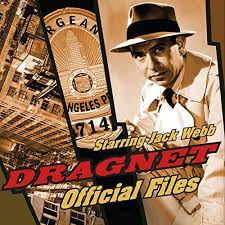
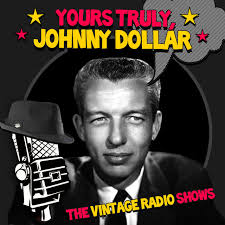
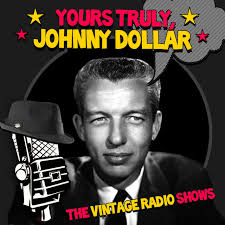
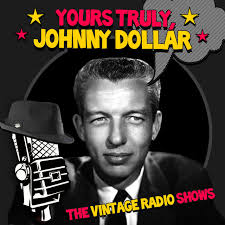

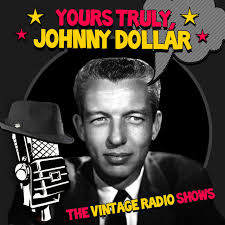
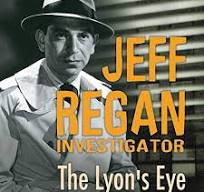
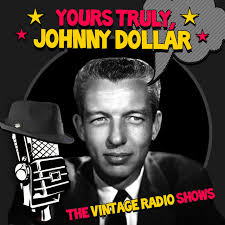
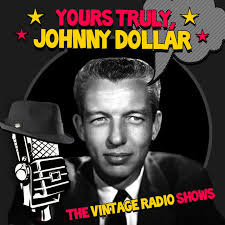
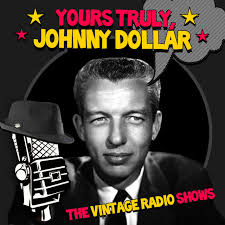
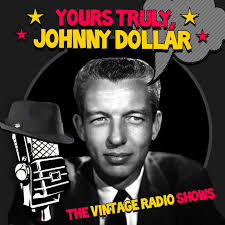
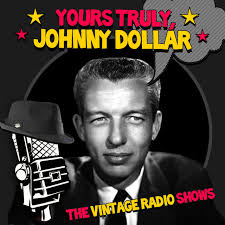
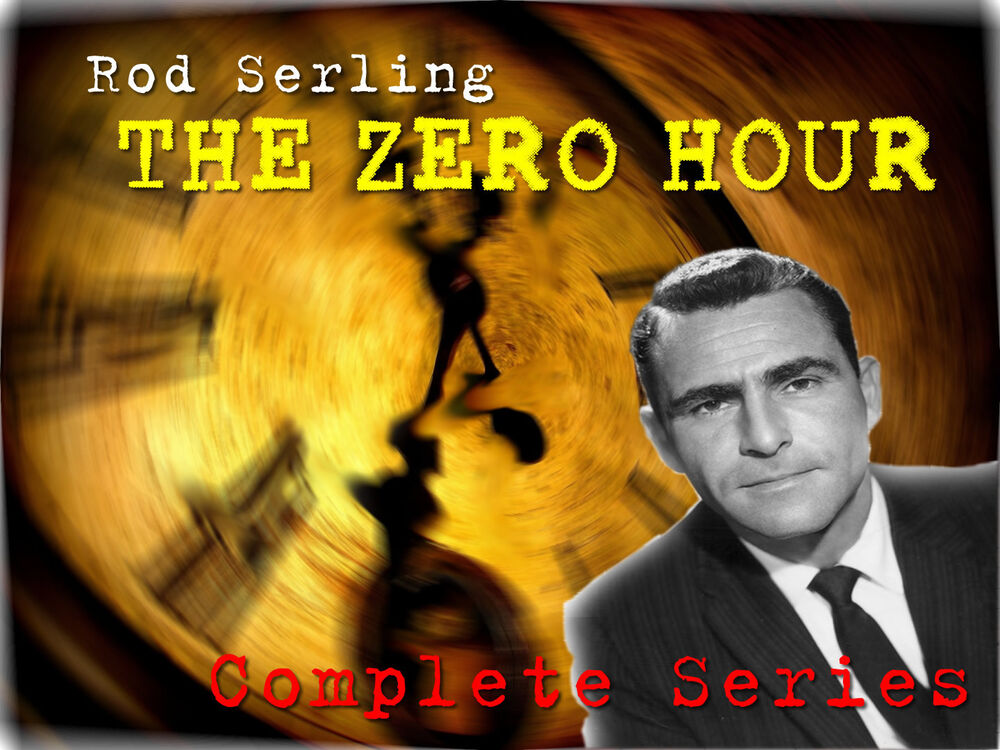
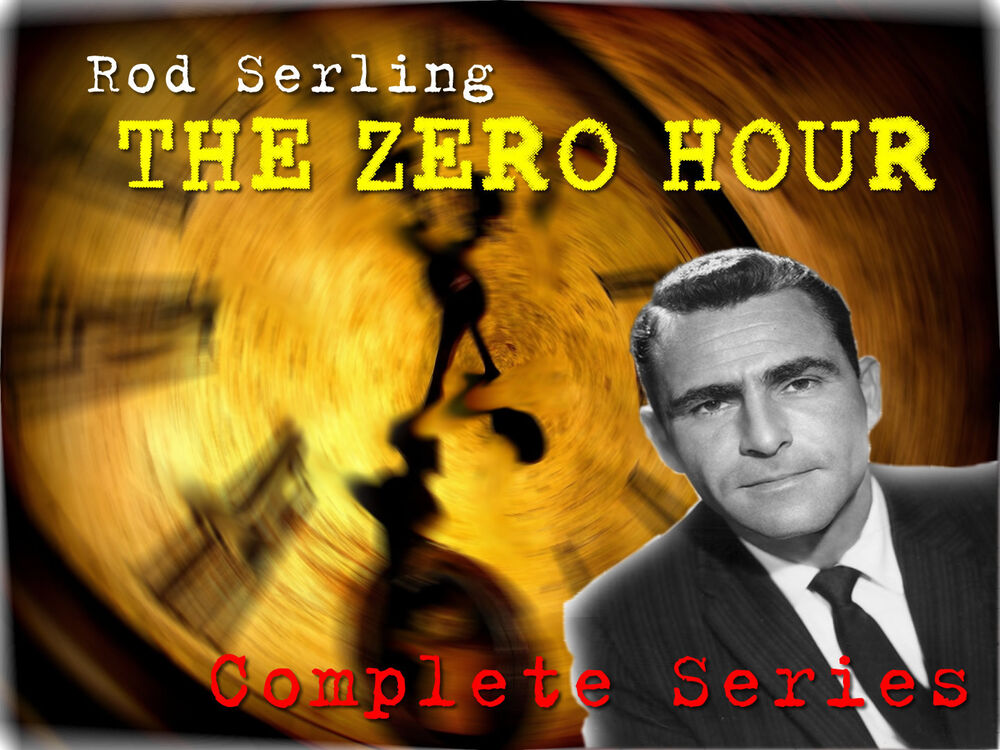
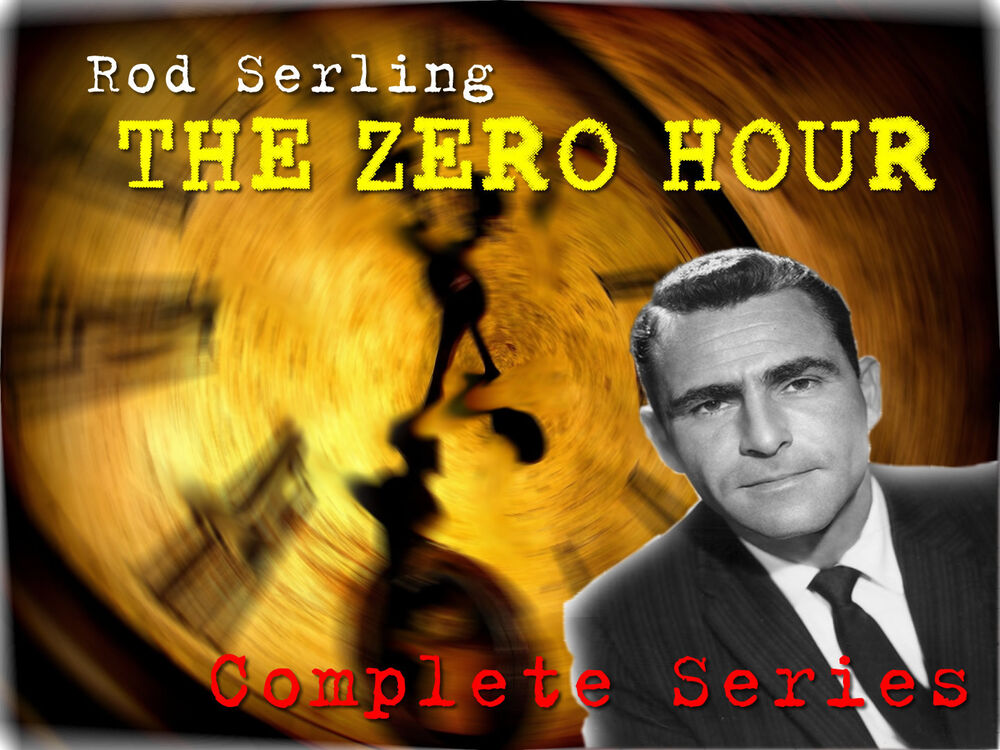
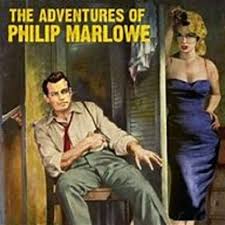
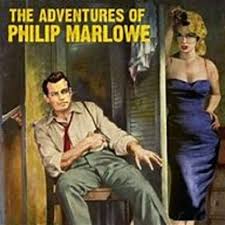



What a great collection of old time radio yarns. Love it, thank you!